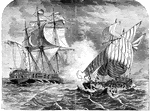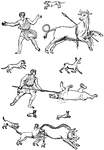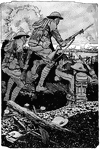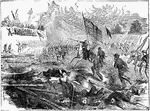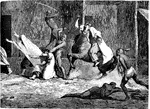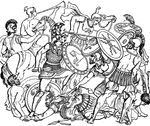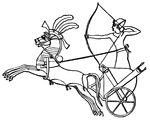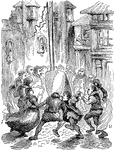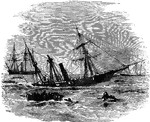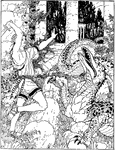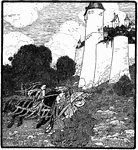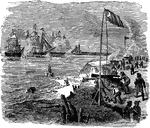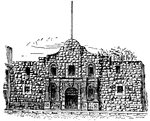
Alamo
The Alamo in San Antonio, Texas where the battle occurred during the war for Texan independence.
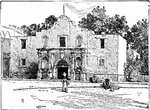
The Alamo
The Battle of the Alamo was fought in February and March 1836 in San Antonio, Texas. The conflict, a…
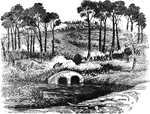
Battle of Antietam
"Battle of Antietam, Md. Burnside's division carrying the bridge over the Antietam Creek and storming…

Battle of Antietam
The Battle of Antietam (also known as the Battle of Sharpsburg, particularly in the South), fought on…

Spanish Armada
An illustration of the Spanish Armanda. The Spanish Armada was the Spanish fleet that sailed against…

Assyrian Soldiers Fighting
A depiction of two soldiers fighting for Assyria, using bow and arrows against their enemies.
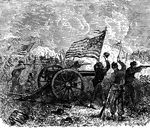
Battle of Atlanta
Showing the Battle for Atlanta, which Sherman won for the Union during the Civil War.

Battle of Baker's Creek
"Battle of Baker's Creek, May 16th, 1862- Defeat of the Confederates under Pemberton, by General Grant.…

Battle of Azincourt
The Battle of Agincourt was an English victory against a larger French army in the Hundred Years' War.…

The Battle of Fontenoy
"The Battle of Fontenoy. From the painting by Horace Vernet, at Versailles." -Rees, 1894
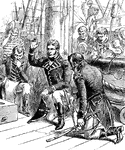
Before Battle Prayer
The crew of a naval ship in the Revolutionary War praying before they head in to battle.
!["After a successful summer campaign, [Caesar] made his way to the coast and cross over into Britain. He then withdrew into his winter-quarters in Gaul, but in the following year returned into the island, defeated the British Celts under their king Cassivellaunus, and reduced the country to a dependency, compelling the Britons to pay tribute and give hostages."](https://etc.usf.edu/clipart/78900/78943/78943_landing_01_mth.gif)
Landing of the Romans in Britain
"After a successful summer campaign, [Caesar] made his way to the coast and cross over into Britain.…

Battle of Bull Run
The First Battle of Bull Run, also known as the First Battle of Manassas, was the first major land battle…

Commencement of Bull Run
"The Confederate forces under General Jackson advancing upon the Rapphannock Station at the river. Federal…
!["Raising a large army [Kudur-Lagamer] advanced up the Euphrates, and thence westward against the Caanitish tribes, who under their kings gathered in the valley of the eastern invader. Here was fought one of the first greatest battles recorded in history. Kudur-Lagamer was victorious, and the kings of Canaan were for a period of twelve years brought into subjection."—Ridpath, 1885](https://etc.usf.edu/clipart/78800/78888/78888_canaan_01_mth.gif)
Kudur-Lagamer Storming a Town in Canaan
"Raising a large army [Kudur-Lagamer] advanced up the Euphrates, and thence westward against the Caanitish…

Battle of Cedar Mountain
"Gordon's and Crawford's Brigades driving the Confederate forces from the woods at the Battle of Cedar…

Ruins of Chancellorsville
The Battle of Chancellorsville was a major battle of the American Civil War, fought near the village…

Final Charge at Gettysburg
The final charge of the Battle of Gettysburg. Both the Confederates and the Union lost thousands of…
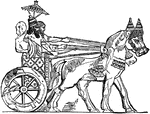
Assyrian War Chariot
"The stalwart character and aggressive bearing of the Assyrians were particularly shown in war. The…

Battle of Charles City
"Battle of Charles City Road- charge of the Jersey Brigade- the first New Jersey brigade, General Tayler,…
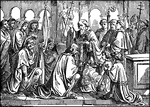
Clovis, King of the Franks, is Baptized by Saint Remigius
Illustration of King Clovis kneeling before Saint Remigius. Clovis' wife, Clotilde, kneels next to him.…
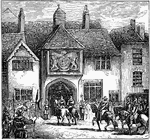
Fairfax Taking Possession of Cochester
In 1189, Colchester was granted its first Royal Charter by King Richard I (Richard the Lionheart.) In…
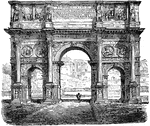
Arch of Constantine
The Arch of Constantine was erected to celebrate Constantine's victory of Maxentius at the Battle of…

Constantinople
An illustration of the fortification around Constantinople and soldiers firing cannons.

The Consititution Capturing the Cyane and Levant
The Constitution engaging two British ships, the Cyane and Levant.

Battle of Cross Keys
"The Battle of Cross Keys- opening of the fight- the federal troops, under General Fremont, advancing…

Battle of Cross Keys
"Battle of Cross Keys, Sunday June 8th, 1862- centre and front of the Federal army in the engagement.…
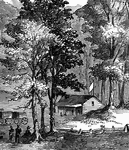
Battle of Cross Keys
"The Battle of Cross Keys- opening of the fight- the federal troops, under General Fremont, advancing…

Battle of Cross Keys
"The Battle of Cross Keys- opening of the fight- the federal troops, under General Fremont, advancing…
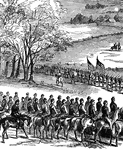
Battle of Cross Keys
"The Battle of Cross Keys- opening of the fight- the federal troops, under General Fremont, advancing…

Battle of Cunaxa
Battle fought between two brothers, Cyrus the Younger and Arsaces. Cyrus managed to collect eleven thousand…
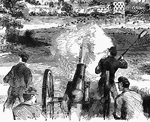
Battle at Dam No. 4
"Battle at Dam No. 4, Potomac River, between Butterfield's brigade and a large Confederate force. A…
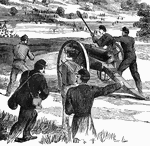
Battle at Dam No. 4
"Battle at Dam No. 4, Potomac River, between Butterfield's brigade and a large Confederate force. A…

Battle at Dam No. 4
"Battle at Dam No. 4, Potomac River, between Butterfield's brigade and a large Confederate force. A…
!["Here [Darius] was assassinated by Bessus, the satrap of Bactria. He was discovered by Alexander in a dying condition by the roadside. He asked for a cup of water, thanked the giver, and died. And with him died the Empire of the Persians."—Ridpath, 1885](https://etc.usf.edu/clipart/78900/78909/78909_dariusbody_mth.gif)
Alexander Discovers the Body of Darius
"Here [Darius] was assassinated by Bessus, the satrap of Bactria. He was discovered by Alexander in…
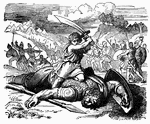
David Slays Goliath
"And it came to pass, when the Philistine arose, and came and drew nigh to meet David, that David hastened,…
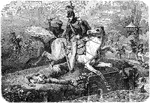
The Death of Poniatowski
"The Death of Poniatowski. From the painting by Horace Vernet." -Rees, 1894
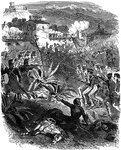
Battle of El Molino del Rey
The Battle of El Molino del Rey was fought during the Mexican-American War in the city of Chapultepec…

Eleazar Attacks the Elephant
"And Eleazar the son of Saura saw one of the beasts harnessed with the king's harness: and it was higher…

Egyptians in Battle with the Ethiopians
Depicts a battle between Egyptians and Ethiopians, with a few slain men on the ground and other men…

Astor to Philip's Right Eye
"It was during the siege of Methone that Philip had the misfortune to lose on of his eyes. A random…
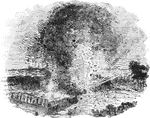
Blowing Up Fort Hill Bastion
As June wore on, Grant pressed the siege with vigor. Johnston tried to help Pemberton, but could not.…
